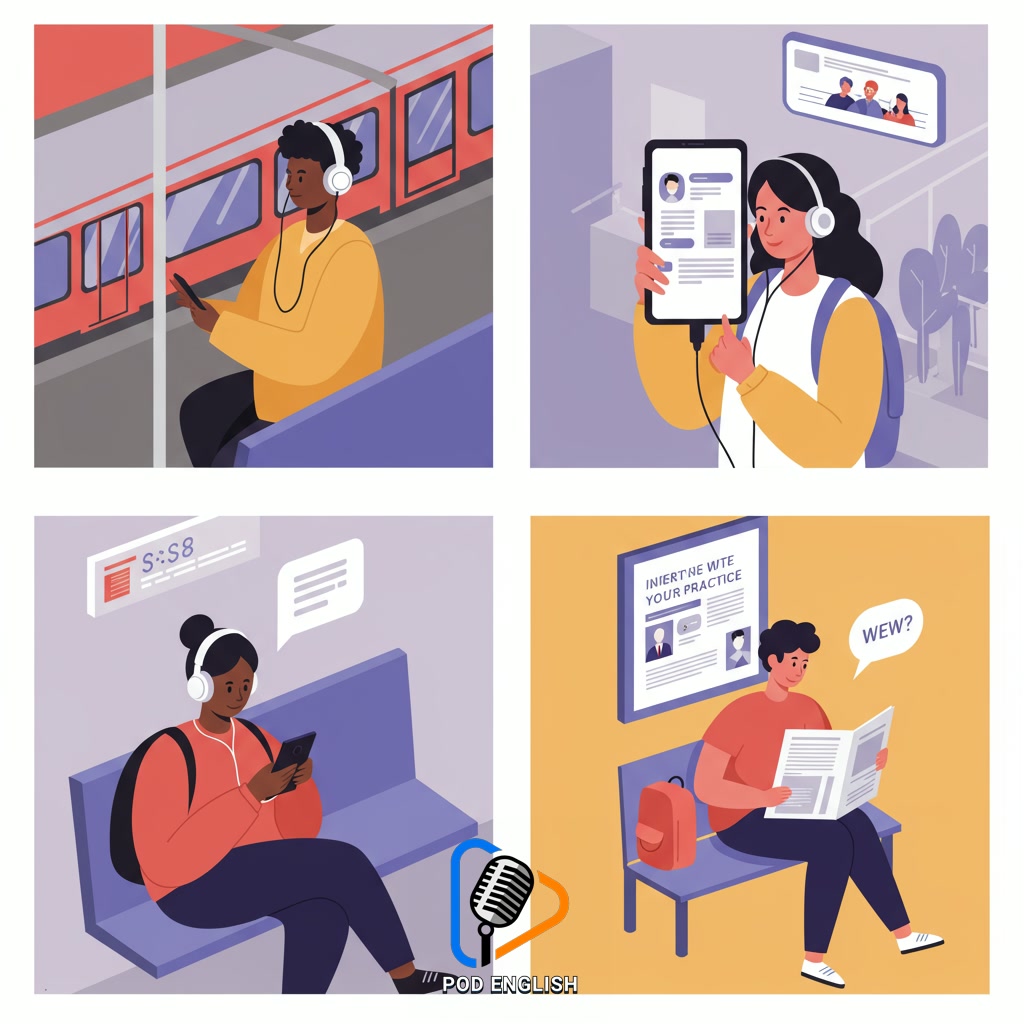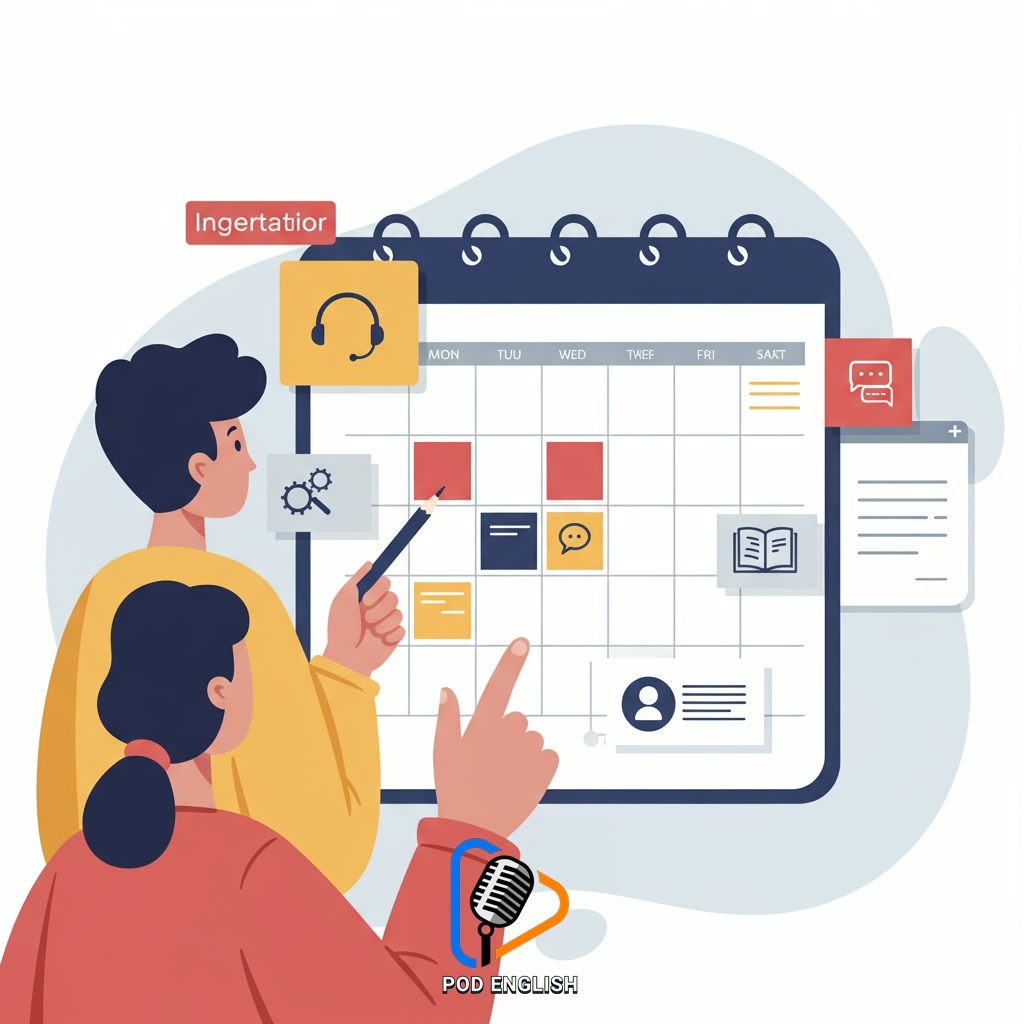Learn English
Learn English: Effective Strategies to Practice When Your Schedule is Packed

This content explores practical approaches for individuals looking to improve their English proficiency despite having limited free time. It provides actionable tips and techniques to integrate language practice seamlessly into a busy lifestyle. The focus is on utilizing small pockets of time effectively to maintain consistent progress in English learning.
Table of Contents
- Section 1: Understanding the Challenge: Why Busy Schedules Hinder English Learning
- Section 2: Maximizing Tiny Time Slots: Finding Minutes to Practice
- Section 3: Integrating English into Your Daily Routine Seamlessly
- Section 4: Leveraging Technology for On-the-Go Learning
- Section 5: Setting Achievable Micro-Goals for Consistent Progress
- Section 6: Maintaining Momentum: Staying Motivated When Time is Limited
- Section 7: Putting It All Together: Creating Your Personalized Practice Plan
Section 1: Understanding the Challenge: Why Busy Schedules Hinder English Learning
Many individuals juggling busy lives find that a lack of available time is the primary obstacle to consistent English practice. Packed schedules filled with work, family commitments, and daily errands leave very little free time, and even less energy, for dedicated study. This constant demand on time and mental resources makes it challenging to find regular blocks for focused learning or even short, effective practice sessions. The feeling of being overwhelmed by other responsibilities often leads to procrastination or skipping practice altogether, breaking the crucial rhythm needed for language acquisition. Understanding that this lack of consistent time and the resulting fatigue are significant barriers is the first step in addressing how to learn English effectively despite a demanding schedule.

Understanding the Challenge: Why Busy Schedules Hinder English Learning
Section 2: Maximizing Tiny Time Slots: Finding Minutes to Practice
Contrary to the belief that effective English practice requires large blocks of uninterrupted time, significant progress can be made by strategically utilizing the small pockets of time that naturally occur throughout a busy day. These ‘tiny time slots’ might be just a few minutes while waiting for coffee, during a commute on public transport, or while standing in line. The key is recognizing these moments and having quick, accessible practice activities ready. Instead of scrolling through social media, you could review new vocabulary flashcards on your phone, listen to a short English podcast segment, or quickly read a paragraph from an English article. These brief, frequent exposures add up remarkably over time, keeping English active in your mind and reinforcing learning without demanding hours you simply don’t have.

Maximizing Tiny Time Slots: Finding Minutes to Practice
Section 3: Integrating English into Your Daily Routine Seamlessly
Building on the idea of utilizing small time pockets, the key to consistent progress when busy is seamless integration. Instead of scheduling dedicated study blocks, look for opportunities to weave English into activities you already do daily. This means turning mundane moments into learning opportunities. Listen to English podcasts or audiobooks during your commute, while cooking, or doing housework. Change the language settings on your phone and social media. Read English news headlines or short articles during brief breaks. Use vocabulary or grammar apps while waiting in line. Even thinking in English during simple tasks can help reinforce language patterns. The goal is to make English practice feel less like an extra chore and more like a natural, effortless part of your existing routine, leveraging those precious small moments throughout the day.

Integrating English into Your Daily Routine Seamlessly
Section 4: Leveraging Technology for On-the-Go Learning
In today’s fast-paced world, technology becomes your most powerful ally for squeezing English practice into a packed schedule. Leveraging smartphones, tablets, and laptops allows you to turn mundane moments like commutes, waiting in line, or short breaks into productive learning opportunities. Utilize language learning apps offering bite-sized lessons and interactive exercises you can complete in minutes. Listen to English podcasts or audiobooks during your travel time, transforming passive listening into active comprehension. Access online resources, flashcards, and practice quizzes anytime, anywhere. The key is to have your learning tools readily available on your device, making it effortless to dip into English practice whenever a small window of time opens up, ensuring consistent exposure even when you feel like you have no free time at all.

Leveraging Technology for On-the-Go Learning
Section 5: Setting Achievable Micro-Goals for Consistent Progress
Following the discussion on leveraging technology, the next crucial step when time is limited is to redefine what “progress” looks like. Instead of aiming for lengthy study sessions, focus on setting “micro-goals.” These are tiny, manageable tasks that can be completed in just a few minutes, like reviewing five flashcards during your commute, listening to a short English podcast segment while making coffee, or practicing one specific grammar point during a lunch break. The key is consistency: completing these small tasks daily or multiple times a day builds momentum and ensures you are actively engaging with the language regularly, even when your schedule feels overwhelming. Tracking these micro-goals, perhaps using a simple app or checklist, can provide a sense of accomplishment and reinforce positive habits, making consistent learning a sustainable part of your busy routine.

Setting Achievable Micro-Goals for Consistent Progress
Section 6: Maintaining Momentum: Staying Motivated When Time is Limited
Maintaining motivation when time is tight is crucial for consistent progress. When you’ve redefined progress to fit small bursts, the next step is to keep yourself engaged. Celebrate those tiny wins – finishing a quick app lesson, understanding a single new phrase from a podcast, or successfully using a learned word in a brief conversation. Link your English practice directly to your personal goals, reminding yourself why you started. Visualizing your progress, even if it’s just checking off a few minutes on a calendar, can provide a sense of accomplishment. Don’t aim for perfection; aim for consistency. Remember, even micro-sessions build momentum over time and prevent burnout, keeping your enthusiasm alive despite a demanding schedule.

Maintaining Momentum: Staying Motivated When Time is Limited
Section 7: Putting It All Together: Creating Your Personalized Practice Plan
Now that you’ve embraced the power of small bursts and learned how to keep motivation high by celebrating tiny victories, the next crucial step is to integrate these concepts into your daily life. This involves creating a personalized English practice plan that realistically fits your busy schedule. Start by analyzing your day to identify those potential pockets of time – maybe it’s ten minutes during your commute, fifteen minutes during lunch, or five minutes while waiting for coffee. Once you’ve found these slots, decide which specific, short English activities you can consistently do during each one. This isn’t about adding more pressure; it’s about strategically placing manageable practice moments throughout your existing routine. Write it down, either digitally or physically, and be prepared to adjust as needed. The goal is consistency, not perfection, making English a natural part of your day.

Putting It All Together: Creating Your Personalized Practice Plan













